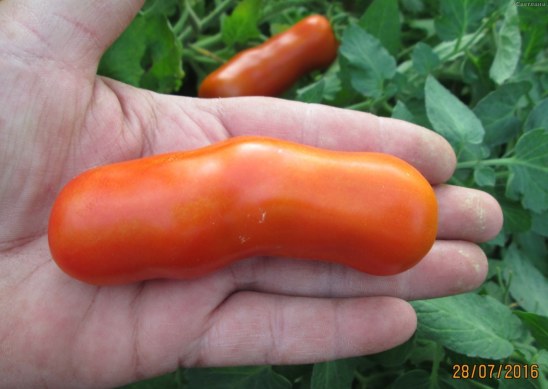 Only 20 years ago, seeds were planted on the site that could be purchased in the store, the choice was naturally not so great. At the moment, breeders have bred a lot of new varieties, so much so that gardeners are simply lost when choosing seeds.
Only 20 years ago, seeds were planted on the site that could be purchased in the store, the choice was naturally not so great. At the moment, breeders have bred a lot of new varieties, so much so that gardeners are simply lost when choosing seeds.
The assortment is quite extensive, of course, all varieties differ in characteristics and care. You can choose a more suitable variety, given the region of planting, the ripening period, yield and disease resistance.
Content
Description
Tomato "Casanova" is a high-yielding variety, listed in the State Register of the Russian Federation in 2017. Up to 12 kg of delicious fruits can be collected from one square meter with the prescribed care. Bushes of an indeterminate type, tall can reach two meters. The stalk is powerful, medium leafy. Fruits are arranged by brushes, on one 4-6 tomatoes are placed.
Tomatoes have an unusual elongated shape, with a fork at the end. In length reach 20 centimeters, their weight can be from 150 to 200 grams. At the stage of maturity, they are painted in a bright red color. The peel is quite dense, the flesh is sweet, fleshy has an excellent taste inherent in tomatoes.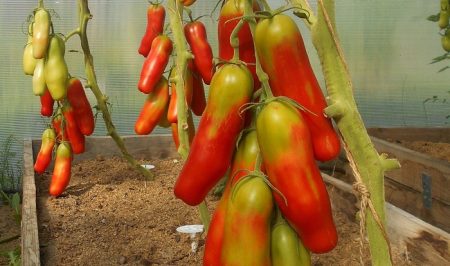
This variety throughout the country, except for the southern regions, is recommended to be grown in greenhouses. Tomatoes are used fresh for food, they can also be frozen and closed for the winter, they are suitable even for whole-fruit preservation, since the skin does not crack during thermal processing.
Advantages
- An interesting form of fruit.
- Attractive presentation.
- Great taste.
- Excellent yields.
- Universal application.
disadvantages
- Time-consuming plant care, including garter, stepson removal and regular feeding.
- In central Russia, planting in greenhouses.
Disease and weather resistance
"Casanova" loves light and warmth, bushes do not cope well with worsening weather conditions. In the event of an invasion of pests, they are fought as follows:
- "Bazudin" will save from the wireworm.
- A drug called "Thunder" will help get rid of the bear.
- Slaked lime, which is added to the soil under the root, will destroy the slugs.
- Using a drug such as Karbofos, a spider mite is removed.
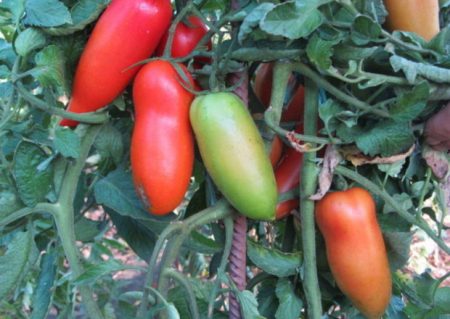
Preparing for sowing and planting seeds
Sow seeds on average 60 days before transplanting to a permanent place. You will need containers with a depth of at least 10 centimeters, you can take ordinary wooden boxes. Soil is prepared in advance, for this, turf soil and humus are mixed in equal proportions, peat and sawdust can be added for the best result. Then you should prepare the seeds, for a start you need to choose larger ones. Hold them for 20 minutes in a disinfecting solution by preparing it from 1 g of manganese and 200 ml of water, and then rinse. The day before planting, the seeds are placed on a damp cotton cloth.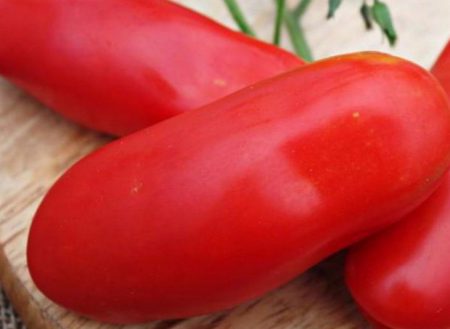
They are planted in well-moistened soil, to a depth of about one centimeter, the distance between the seeds should be at least 2 cm. After planting, the container is covered, for this you can use clear glass or film and put in a warm place. When the first sprouts hatch on the soil surface, the shelter is removed, and the container is moved to the windowsill, the temperature for growing seedlings should be + 20 +23. Young plants are watered with a spray, using warm water, do this not too often, every 5-7 days.
When the seedlings release two true leaves, they dive, it is better to take 500 ml containers so that there is room for the development of the root system. When the third leaf appears, you can start fertilizing it for the first subcortex, “Agricola No. 3” is suitable. The second and third are carried out with an interval of two weeks, for them you can use a solution of complex fertilizers. Make it as follows: 1 tbsp. a spoon is diluted in 5 liters of water, 100 ml is enough for one plant. 10 days before transplanting, it is recommended that seedlings begin to be hardened, taking it out daily, and the time spent in the air is increased each time.
Planting in a greenhouse or in beds
Since the soil warms up much faster in the greenhouse, seedlings are planted in it earlier, approximately at the beginning of May. Soil Prepare in the fall, fertilizing it with potash and phosphorus fertilizers per 1 meter square, you need 30 grams each. In the spring, nitrogen-containing top dressing is applied at the rate of 15 grams per square meter.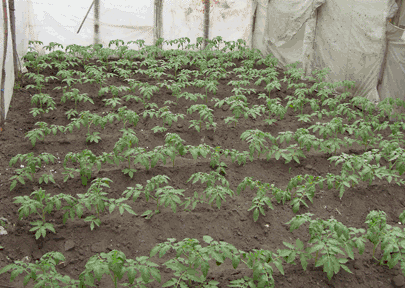
The readiness of seedlings for transplantation can be determined by the following criteria:
- The presence of one flower brush.
- Height is 27-30 centimeters.
- Shortened internodes.
Wells are dug at a distance of 50 centimeters, their depth should be approximately like a cup with seedlings. On 1 m2 Do not place more than 4 bushes, this can reduce productivity.
Due to the fact that they need tall support, they can install stakes in each hole or make a trellis. Shrubs also need to be formed, usually leave 2 stems, they need a weekly removal of stepsons. Variety "Casanova" is demanding on moisture, you need to water the plants at least twice a week, not forgetting to loosen the soil after watering.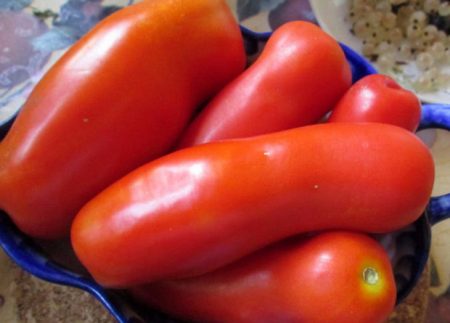
For best results, plants are fed organic fertilizers (compost, bird droppings, eggshells) or minerals. To stimulate flowering, a solution of boric acid is used at the rate of 1 g per 5 l of water.
Harvesting
You can pluck brown, almost ripe tomatoes, placing them in boxes for further ripening. Located, they should be in a cool, well-ventilated area. It is better to overtake each layer of tomato, using straw for this. The fruit is well tolerated by transportation and is subject to storage. Tomatoes must be collected before frost, otherwise they will freeze and spoil.
Conclusion
"Casanova" is a fairly productive variety, but care should be appropriate, in its absence, indicators fall. Universal in application, which is also a huge plus. Having tried to grow it once, each gardener will certainly plant it again.
Reviews
Ivan 39 years old
I have been living in the house all my life, and from an early age I helped my parents look after the garden. So I have had more than 30 years of experience, of course, then there was no such variety of varieties, but still. I try to choose high-yielding varieties for myself; in that year, Casanova became one of the new ones on my site. It is demanding in care, but its fruits are worth it, sweet and tasty, you can close and eat fresh. The crop is excellent, even more than 12 kg per square meter.
Alexey 60 years
This year, he planted several new varieties for me, all showed good results. I especially liked Casanova, the taste is delicious, and the harvest is excellent. He looked after, as usual, watered, loosened, fed and, of course, tied and removed the shoots. I was satisfied, I’ll put it again.




 Low-growing tomatoes, without pinching: 5 of the most delicious varieties
Low-growing tomatoes, without pinching: 5 of the most delicious varieties Why tomato seedlings grow poorly
Why tomato seedlings grow poorly We grow a tomato in a shell
We grow a tomato in a shell Growing tomatoes without watering according to the method of Kazarin
Growing tomatoes without watering according to the method of Kazarin